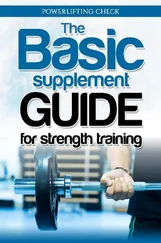If you’re doing a different type of warm-up, make sure it’s at least five minutes long and that you work at an easy intensity, gradually increasing how hard you’re working so that your body feels warm and ready for exercise.
THE STRENGTH TRAINING WORKOUTS
Your program starts with total body strength training with a variety of movement patterns that not only mimic daily movements, such as squatting and lifting, but also help you build a strong foundation that will support your body in both exercise and daily activities.
This program is set up to ease you into strength training by giving you time to perfect different movement patterns and feel comfortable with challenging your body with different types of resistance.
The workouts include ten or more exercises, some using resistance, such as dumbbells or resistance bands, and others not, that target all the major muscles of the body including the chest, back, shoulders, arms, and legs. Your suggested schedule includes strength training one to two times a week with at least one day of rest in between.
For each exercise, you’ll do a number of sets and repetitions that change over the course of the program so that you avoid hitting a plateau. Repetitions refer to how many times you do an exercise while a set is the number of repetitions you do consecutively.
Every two weeks, you’ll do a new strength training workout that builds on the previous one with a focus on developing a consistent exercise habit while increasing that all-important lean muscle tissue.
Every two weeks you’ll get new workouts as well as a suggested workout schedule so you can plan your week ahead of time.
CORE, BALANCE, AND FLEXIBILITY WORKOUTS
The core and balance workouts are important because they help you strengthen the most important part of your body. Many of our movements originate from the core, and balance is one thing we often struggle with as we get older.
With these exercises, you’ll build stronger connective tissue while also working on those important stabilizer muscles in the body. As you do each balance exercise, you’ll feel those small muscles, often in your feet and ankles, firing to keep you steady.
All that stability translates into real-life activities like stepping on and off a curb, getting in and out of a car, or going up and down stairs.
The flexibility workout includes stretches for all the major muscle groups and can be done as often as you like, with a minimum of three times a week. This is a great workout to do after your strength training, and much of it is seated so you can relax and focus on feeling good.
THE WORKOUT SCHEDULE
The suggested workout schedules include strength training workouts as well as core and balance training.
On the off days, you can incorporate your own exercise that can include cardio workouts and/or active movement. Some of these activities include:
✓ Walking
✓ Jogging
✓ Swimming
✓ Cycling
✓ Yard work
✓ Household chores
✓ Stretching
Off days can be a time for you to rest your muscles if they’re sore and you feel tired. Or, off days can offer a time to be active and focus your energy on moving around more than you normally do. This can be as simple as setting an alarm for every hour so you can stand up, move around, and stretch.
Chapter 7
Let’s Get Started: The Warm-Up and Flexibility Workout
THE WARM-UP
Do the following dynamic exercises before each strength and core workout. For each exercise, hold a very light weight in both hands. The weight should be between one and three pounds. Complete one set of each exercise. If you feel any pain or discomfort in the joints, ease up on the movement or skip it altogether if you can’t do the exercise without pain. You can also do the exercises with no weights until you feel comfortable with the movements.
Note: Each exercise includes pictures as well as instructions. The instructions for each move, as well as the reps and sets, precede each exercise.
SQUATS
Hold a light weight at chest level and bend the knees, sending the hips back into a squat. Make sure your knees don’t go over your toes but, instead, put your weight in your heels. Stand up and repeat.
1 x 10 reps
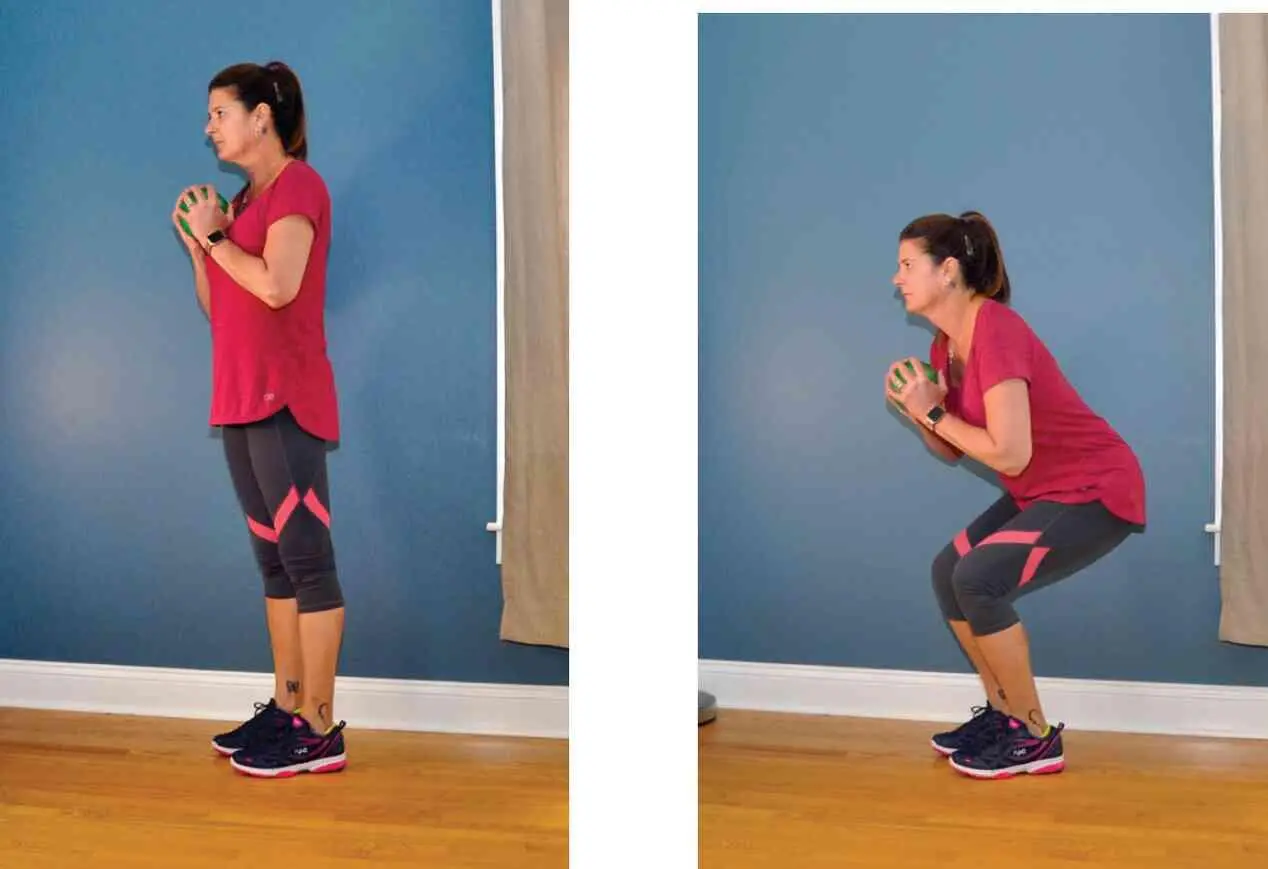
VERTICAL WOODCHOP
Hold a light weight and squat, sending the hips towards the back wall with the weight between the knees. Stand and swing the weight up and overhead. Lower and repeat.
1 x 10 reps
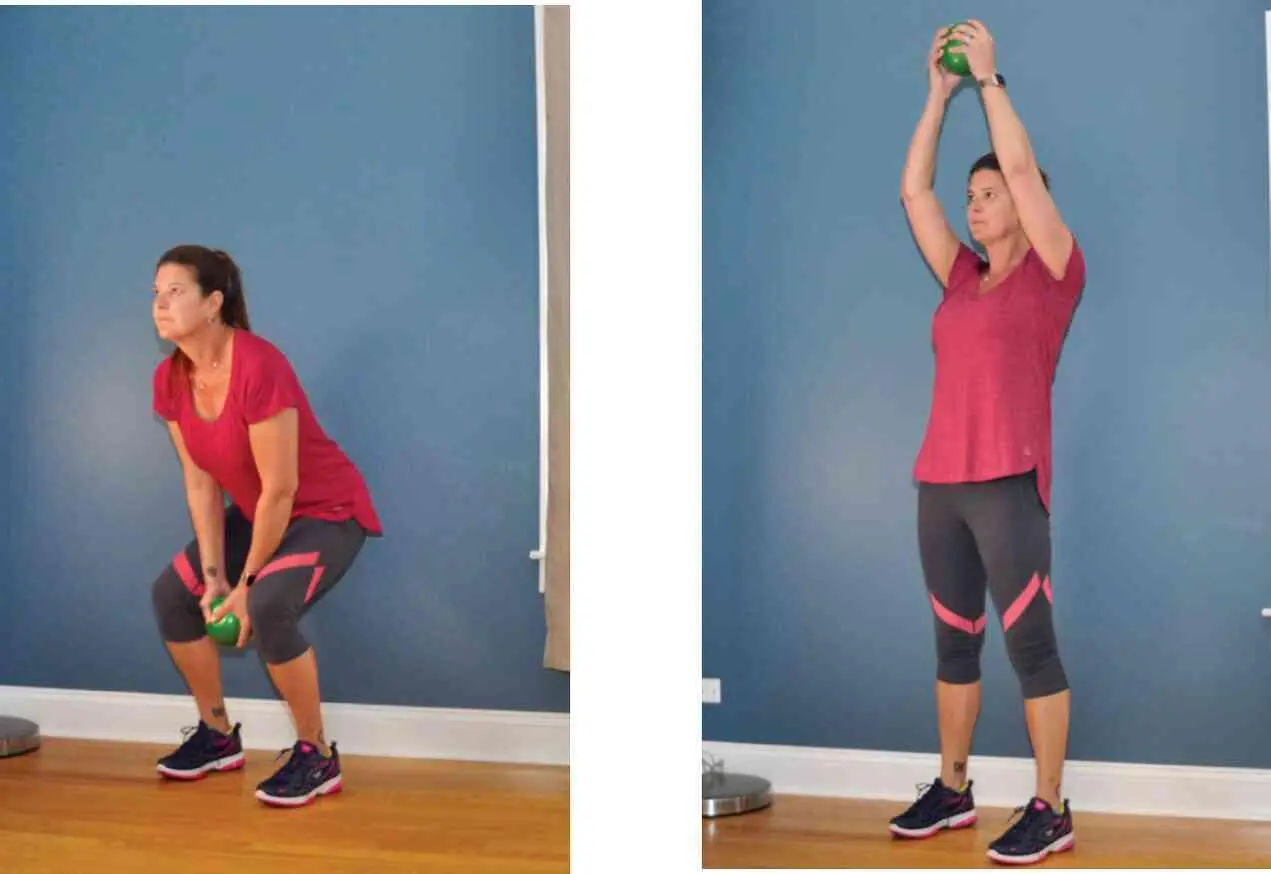
REVERSE LUNGE
Holding a light weight with the feet together, step back with the right foot about 2 to 3 feet, bend the knees, and lower into a lunge. Make sure you go straight down, taking the right knee towards the floor, keeping the front knee behind the toes. Step back to start and repeat, alternating sides.
1 x 16 reps
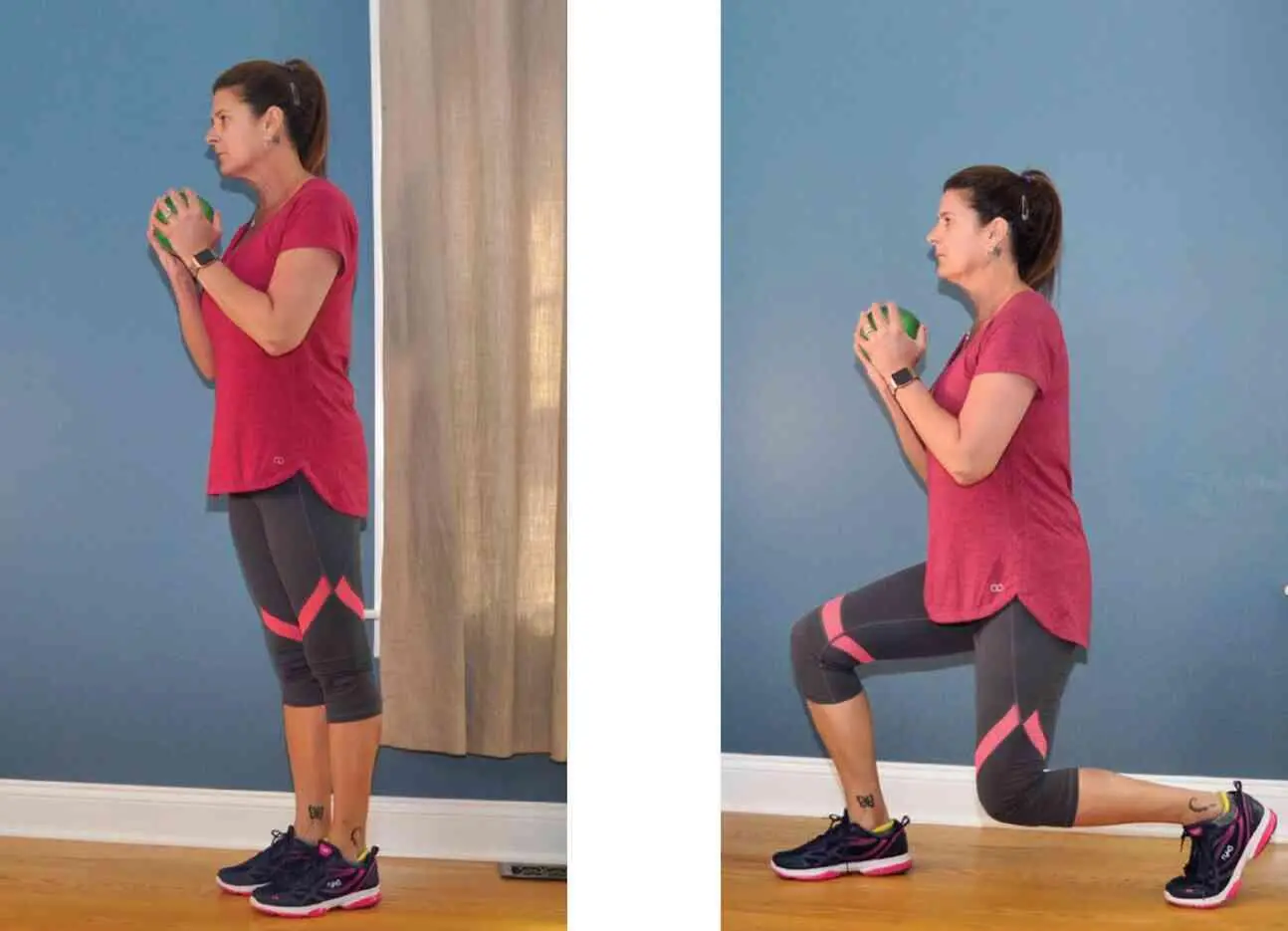
SIDE LUNGE
Holding a light weight at the chest step out to the right, keeping the left leg straight. Bend the right knee, sending the hips back, and lower into a side lunge. Step back to start and alternate sides.
1 x 16 reps

REVERSE LUNGE WITH ROTATION
Hold a light weight at torso level and step back into a reverse lunge with the right foot. As you bend the knees into a lunge, gently rotate the torso to the right. Step back and take the left foot back into a reverse lunge, gently rotating the torso to the left. Step back to start and repeat, alternating sides.
1 x 16 reps
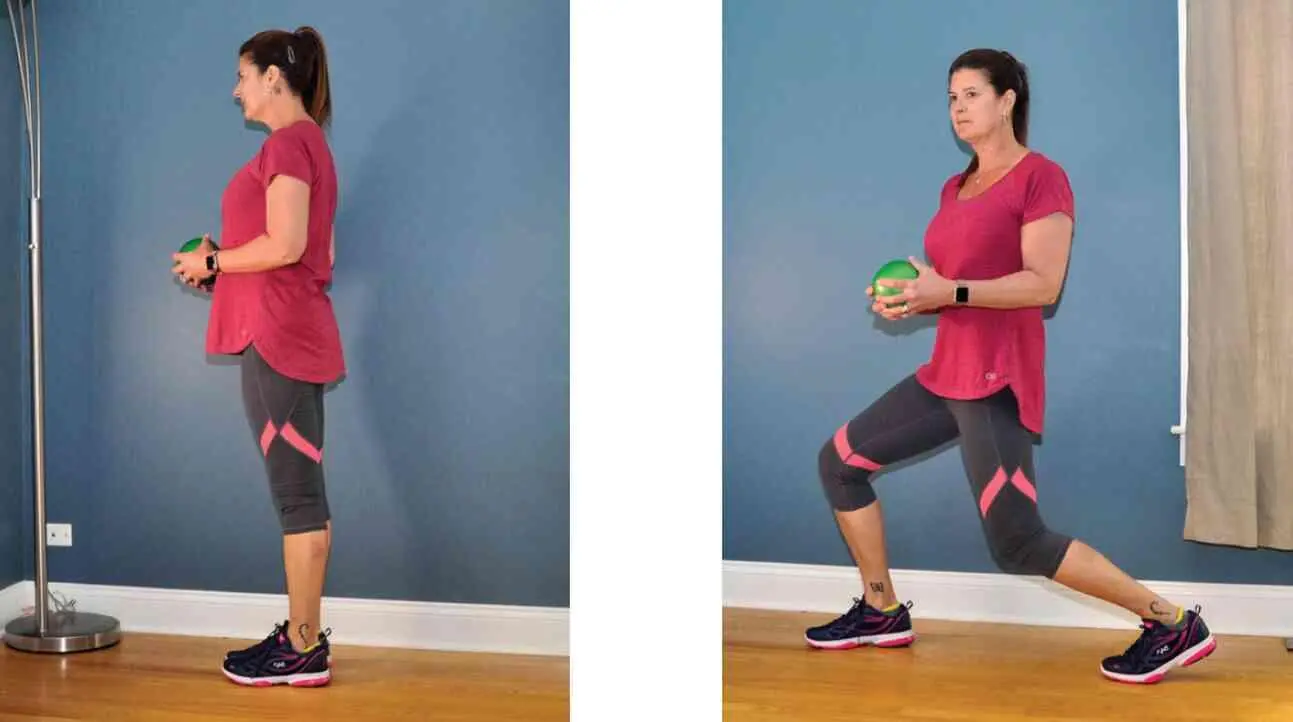
SQUAT WITH A ROTATING PRESS
Holding a light weight in the left hand, bend the knees, sending the hips back into a squat. As you stand, rotate to the right while pressing the weight up overhead. Switch hands, lower into a squat, and press up, rotating to the left and pressing the weight up with the right hand. Repeat all reps on that side before switching sides.
1 x 10 reps
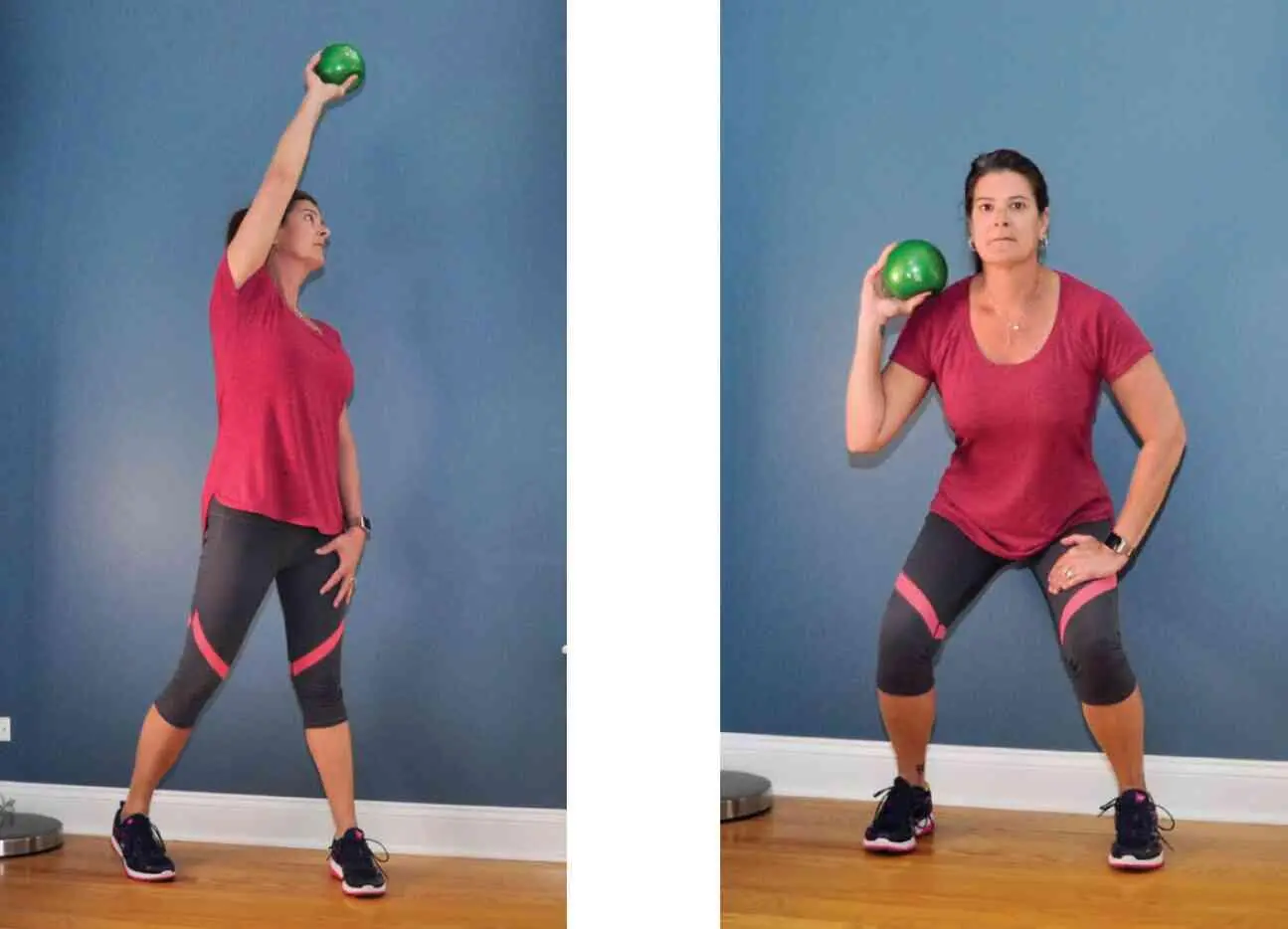
NARROW SQUAT WITH ALTERNATING ROWS
Hold a light weight in both hands while standing with the feet close together. Bend the knees into a squat and tip forward from the hips a bit, keeping the back straight with the weight straight out in front of you. Holding the squat, pull the weight back in a rowing motion with the right hand, squeezing the back. Return back to start and repeat, alternating sides.
1 x 16 reps
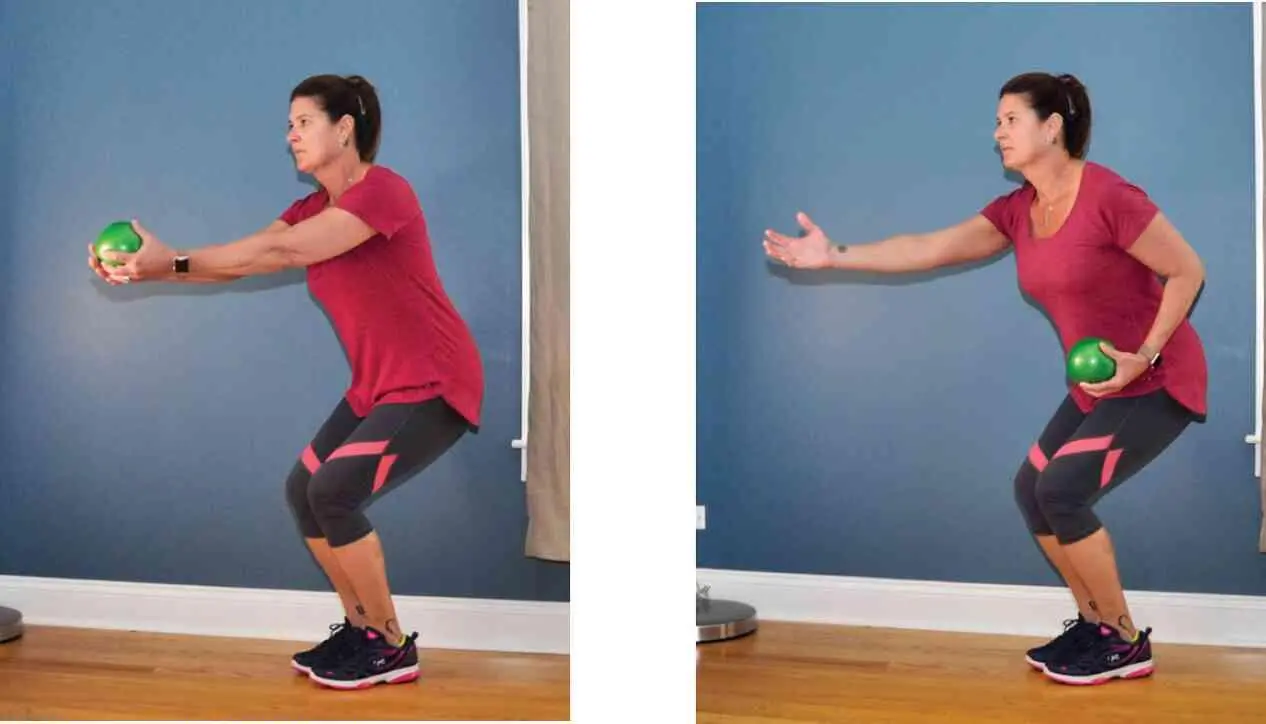
SPLIT STANCE WITH CROSS-BODY ROTATION
Stand in a staggered stance with the left foot back and the right knee slightly bent. Keep your feet wide for better balance and hold a light weight in the left hand. Keeping the left arm straight, take the weight straight back behind you, turning to look at the weight. Return to start and repeat, alternating sides. If this throws you off balance, look forward instead of back.
Читать дальше











